当前位置:网站首页>Implementation of map and set
Implementation of map and set
2022-07-07 03:56:00 【Wuhu kaichong ~】
In front of us, we realized the red black tree ,https://blog.csdn.net/qq_55143256/article/details/125118713
Let's use it today map and set Encapsulate the red black tree
Catalog
Standard library map Related knowledge
Standard library set Relevant knowledge points of
map
KeyOfValue
If you take a closer look at the implementation code of red black tree , You will find something strange , Namely KeyOfValue, What is this for ? Is the packaging map It needs to be used when
It's in map Its function is to map The key value in it is right , Extract the key, Because we map When comparing , In fact, it is the key value pair of comparison key Of
[] heavy load
map Inside [] Symbols can not only take key Corresponding value, You can also insert , If there is no such key, It will key Insert in
 This is the official note , We just write according to the notes it gives
This is the official note , We just write according to the notes it gives
There is nothing else to pay attention to , because map It is the encapsulation of the original red black tree
Code
#pragma once
#include "RBTree.hpp" // The header file here is the header file composed of all the code in the red black tree blog
namespace cdd {
template<class K, class V>
class map {
typedef pair<K, V> ValueType;
struct KeyOfValue {
const K& operator()(const ValueType& value) {
return value.first;
}
};
typedef RBTree<ValueType, KeyOfValue> tree;
public:
typedef typename tree::iterator iterator;
public:
map()
:_t()
{}
iterator begin()
{
return _t.Begin();
}
iterator end()
{
return _t.End();
}
size_t size()const
{
return _t.Size();
}
bool empty()const
{
return _t.Empty();
}
V& operator[](const K& key)
{
return (*(_t.Insert(make_pair(key, V())).first)).second;
}
pair<iterator, bool> insert(const ValueType& value)
{
return _t.Insert(value);
}
void swap(map<K, V>& m)
{
_t.Swap(m._t);
}
void clear()
{
_t.Clear();
}
iterator find(const K& key)
{
return _t.Find(make_pair(key, V()));
}
private:
tree _t;
};
}Standard library map Related knowledge
The standard library is map The container is equipped with a bidirectional iterator (bidirectional iterator). It means ,map Container iterators can only ++p、p++、–p、p–、*p operation , And you can only use between iterators == perhaps != Operator to compare .
It is worth mentioning that , Compared with sequential containers ,map Containers provide more member methods ( As shown in the table 1 Shown ), By calling them , We can easily get iterators with specified meanings .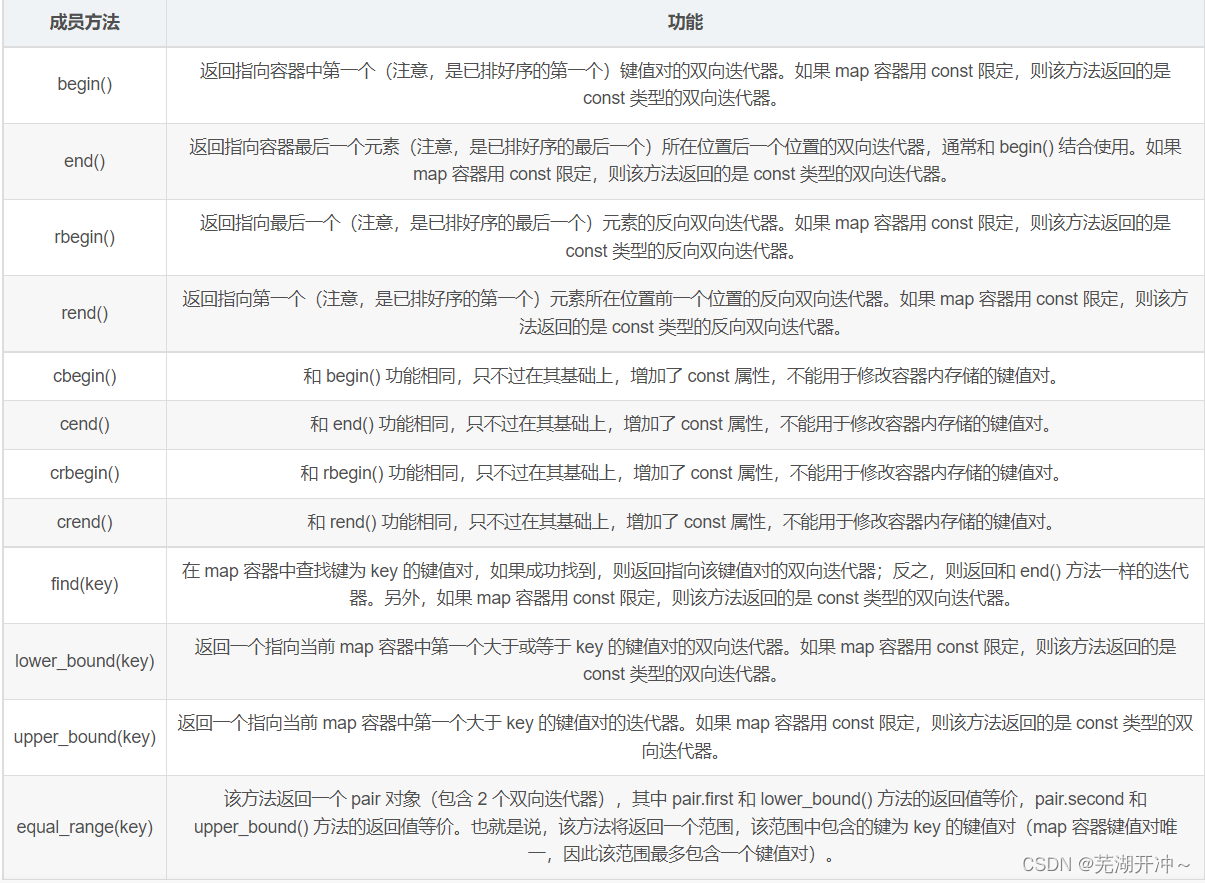
map The default collation for containers is : according to key Values are sorted from small to large , Of course , We can use the imitative function to sort
set
set There is nothing more difficult , It has no [] heavy load , Nor is it a key value pair , So there is really nothing wrong
Code
#pragma once
#include "RBTree.hpp"
namespace zds {
template<class K>
class set {
struct KeyOfValue {
const K& operator()(const K& value) {
return value;
}
};
typedef RBTree<K, KeyOfValue> tree;
public:
typedef typename tree::iterator iterator;
public:
set()
:_t()
{}
iterator begin()
{
return _t.Begin();
}
iterator end()
{
return _t.End();
}
size_t size()const
{
return _t.Size();
}
bool empty()const
{
return _t.Empty();
}
pair<iterator, bool> insert(const K& value)
{
return _t.Insert(value);
}
void swap(set<K>& s)
{
_t.Swap(s._t);
}
void clear()
{
_t.Clear();
}
iterator find(const K& key)
{
return _t.Find(key);
}
private:
tree _t;
};
}Standard library set Relevant knowledge points of
set The method inside
begin() , return set The first element of the container
end() , return set The last element of the container
clear() , Delete set All the elements in the container
empty() , Judge set Whether the container is empty
max_size() , return set The maximum number of elements a container can contain
size() , Returns the current set The number of elements in the container
rbegin , The return value and end() identical
rend() , The return value and rbegin() identical
count() , Used to find set The number of times a key value appears in the . This function is in the set It's not very practical , Because a key value is in set It's only possible 0 or 1 Time , In this way, it becomes to judge whether a key value is set There have been
erase(iterator) , Delete locator iterator The value of the point
erase(first,second), Delete locator first and second Between the value of the
erase(key_value), Delete key value key_value Value
find() , Returns the value of the given value , If not, return end().
These are some commonly used , Actually set The biggest function is to sort and de duplicate a group of elements , Um. , That is to say, its nature is the greatest function
Last , If you have any questions, please leave a message in the comments section
边栏推荐
- 概率论公式
- Index of MySQL
- How to customize the shortcut key for latex to stop running
- Sorting operation partition, argpartition, sort, argsort in numpy
- C task expansion method
- QT item table new column name setting requirement exercise (find the number and maximum value of the array disappear)
- The true face of function pointer in single chip microcomputer and the operation of callback function
- 运算放大器应用汇总1
- What is Ba? How about Ba? What is the relationship between Ba and Bi?
- Enter the rough outline of the URL question (continuously updated)
猜你喜欢

Create commonly used shortcut icons at the top of the ad interface (menu bar)
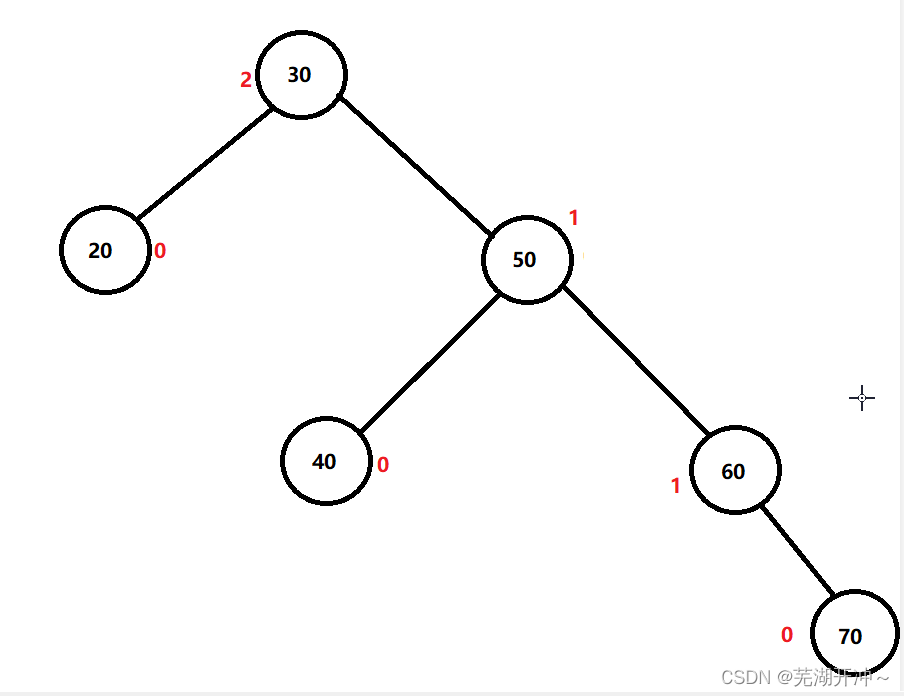
AVL树插入操作与验证操作的简单实现

什么是 BA ?BA怎么样?BA和BI是什么关系?

Mobile measurement and depth link platform - Branch
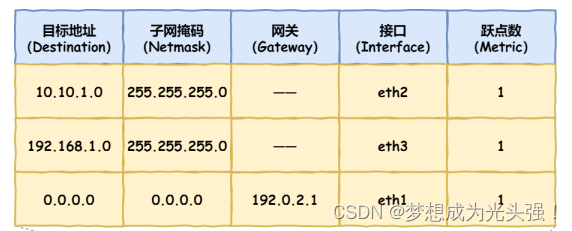
My brave way to line -- elaborate on what happens when the browser enters the URL
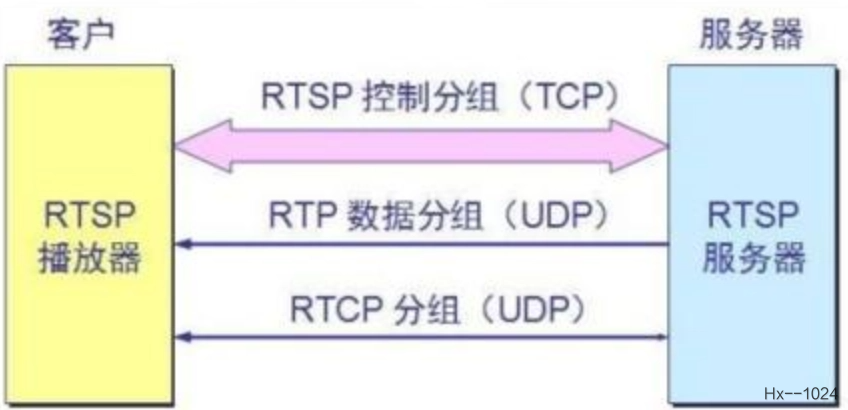
海思3559万能平台搭建:RTSP实时播放的支持

cuda编程

Kotlin Android environment construction

【开发软件】 tilipa开发者软件
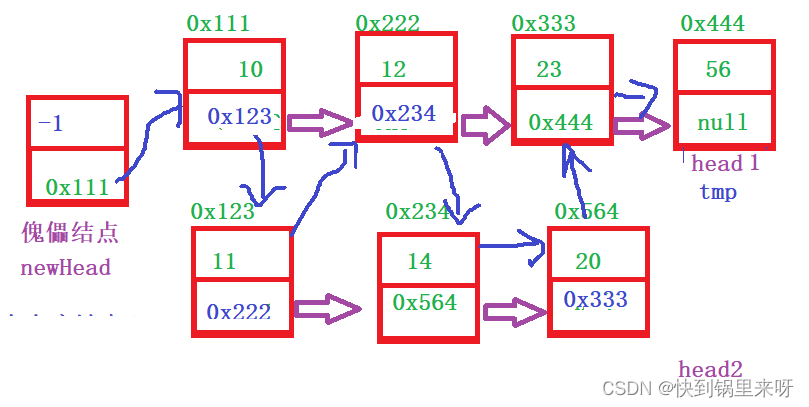
链表面试常见题
随机推荐
leetcode:面试题 17.24. 子矩阵最大累加和(待研究)
卡尔曼滤波-1
21.(arcgis api for js篇)arcgis api for js矩形采集(SketchViewModel)
Flutter3.0, the applet is not only run across mobile applications
24. (ArcGIS API for JS) ArcGIS API for JS point modification point editing (sketchviewmodel)
【mysql】mysql中行排序
Clock in during winter vacation
1200.Minimum Absolute Difference
哈夫曼树基本概念
【knife-4j 快速搭建swagger】
2022夏每日一题(一)
什么是 BA ?BA怎么样?BA和BI是什么关系?
未来发展路线确认!数字经济、数字化转型、数据...这次会议很重要
SSL certificate deployment
再AD 的 界面顶部(菜单栏)创建常用的快捷图标
Force buckle ----- path sum III
QT item table new column name setting requirement exercise (find the number and maximum value of the array disappear)
. Net interface can be implemented by default
Kbone与小程序跨端开发的一些思考
When QT uses qtooltip mouse to display text, the picture of the button will also be displayed and the prompt text style will be modified